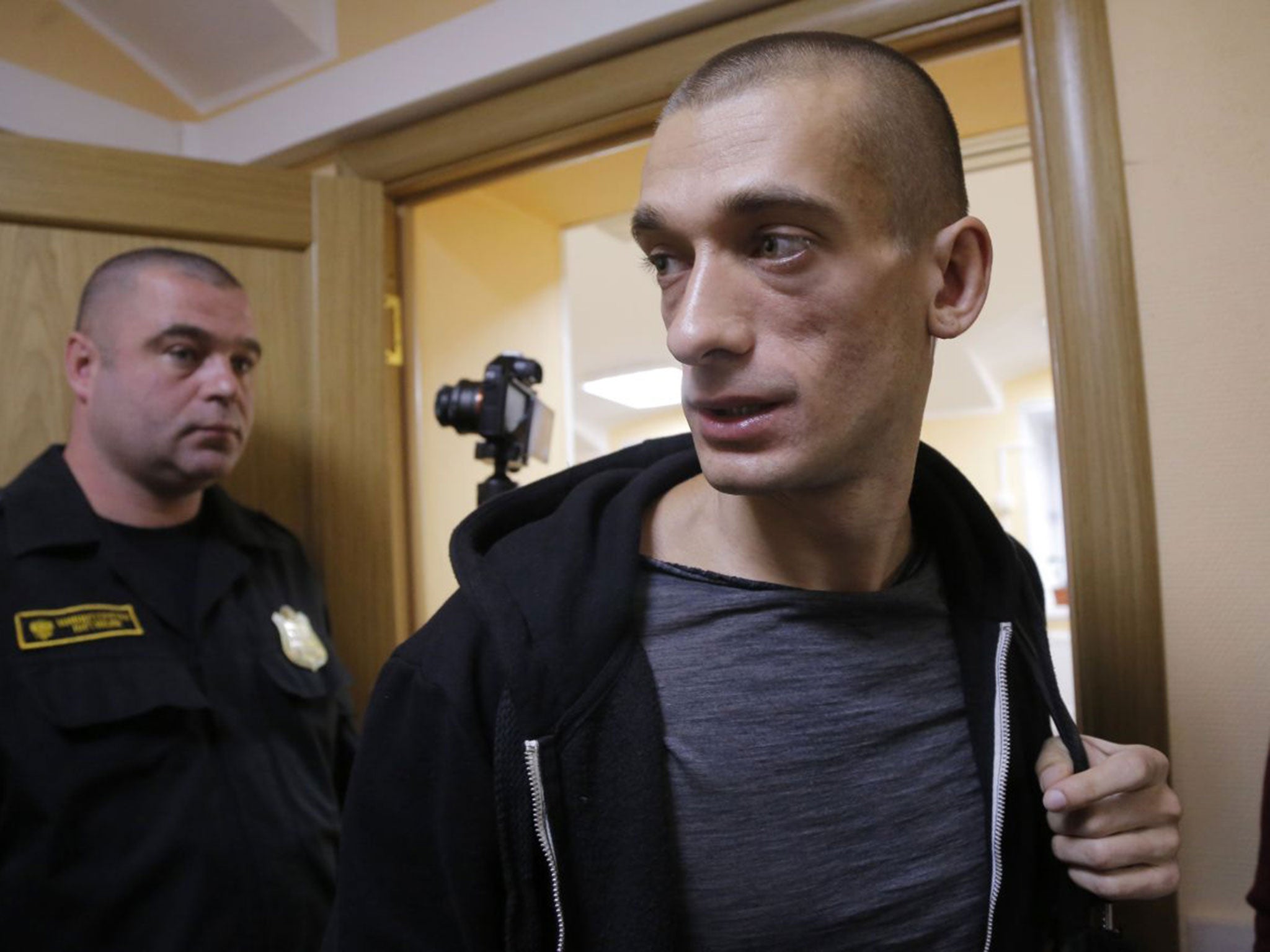Pyotr Pavlensky: ‘Living-pain’ performance artist transferred to Moscow psychiatric institute
Mr Pavlensky is best known for nailing his scrotum to the cobblestones of Red Square

Your support helps us to tell the story
From reproductive rights to climate change to Big Tech, The Independent is on the ground when the story is developing. Whether it's investigating the financials of Elon Musk's pro-Trump PAC or producing our latest documentary, 'The A Word', which shines a light on the American women fighting for reproductive rights, we know how important it is to parse out the facts from the messaging.
At such a critical moment in US history, we need reporters on the ground. Your donation allows us to keep sending journalists to speak to both sides of the story.
The Independent is trusted by Americans across the entire political spectrum. And unlike many other quality news outlets, we choose not to lock Americans out of our reporting and analysis with paywalls. We believe quality journalism should be available to everyone, paid for by those who can afford it.
Your support makes all the difference.Russia’s controversial ‘living-pain’ performance artist Pyotr Pavlensky has been transferred from pre-trial detention to a Moscow psychiatric hospital to undergo evaluation, his partner has reported.
Mr Pavlensky, a dissident best known for nailing his scrotum to the cobblestones of Red Square, was set to attend the first hearing in his criminal case of vandalism on Wednesday, but was transferred to the Serbsky psychiatric institution instead.
His partner, Oksana Shalygina, discovered his whereabouts only hours after news that Mr Pavlensky’s had been moved by police on Wednesday night. She says that her partner could be kept at the psychiatric institute for up to three weeks.
“The Serbsky institute was quarantined immediately after Pyotr was admitted. Nobody, not even his lawyers, was allowed in,” Ms Shalygina told The Independent. “It’s quite possible that they did that to deprive him of all contact with the outside world. Forensic tests on him began straight away.”
The Serbsky psychiatric institute itself became the site of one of Mr Pavlensky’s protests in 2014. In a performance entitled “Segregation”, he climbed onto the wall surrounding the institute and sliced off his ear lobe with a kitchen knife. The act, he said, was a demonstration of how the politically motivated use of psychiatry by the Russian government can “sever” an individual from society. During Soviet times, authorities would silence dissidents by forcefully sending them to psychiatric wards, a practice Kremlin critics say has returned in the years following the anti-Putin protest that shook Russia in 2011 and 2012.
Mr Pavlensky says that “instruments of state power” are vital to his performances. “Every movement by the authorities pulls them deeper and deeper in. They become involuntary participants in the production of my art,” he said last year.
His criminal case was opened in 2014 after he and other activists burned car tyres and waved a Ukrainian flag in a St Petersburg square. The activists called it “a show of solidary” with the Maidan protests in Kiev which ousted pro-Russian president Viktor Yanukovych earlier that year.
Mr Pavlensky was arrested again last November when he torched the front doors of the headquarters of the FSB security service in Moscow. He called the performance a protest against the behaviour of the FSB, who “act using the method of unending terror and holds power over 146 million people”.
“This is a fight for the naming and establishment of borders and forms of political art,” Ms Shalygina said. “Pyotr and I are fine. We are in the process of political art.”
Join our commenting forum
Join thought-provoking conversations, follow other Independent readers and see their replies
Comments